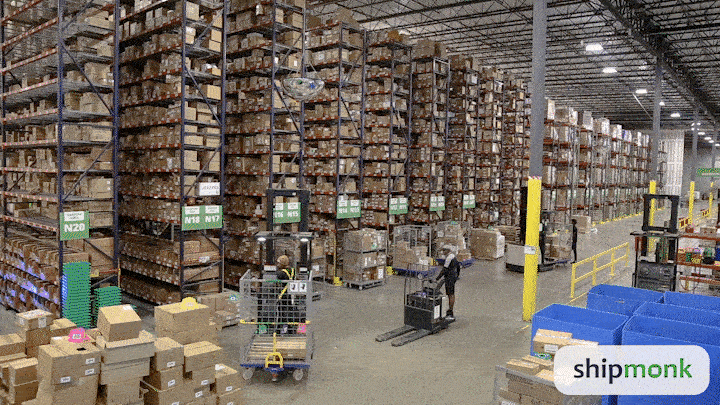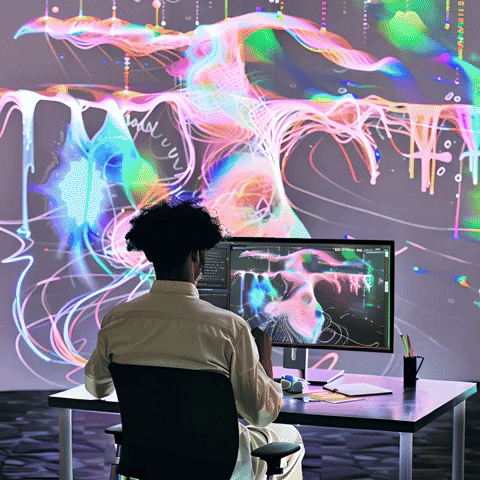The Dawn of Intelligent Communication
The history of virtual assistants is a fascinating journey of technological innovation, reflecting our constant quest for smarter, more adaptive tools to communicate and interact with information.
From simple conversational programs to sophisticated AI systems, these assistants have radically transformed how we understand human-machine interaction.
The Beginnings: Where Did It All Start?
Virtual assistants were born in the 1960s with systems like ELIZA, a program capable of simulating basic conversations. Though innovative for its time, its utility was limited to imitating human responses without truly understanding the context.
Developed by Joseph Weizenbaum at MIT, ELIZA was designed to emulate a psychotherapist using natural language processing techniques.
ELIZA marked a crucial moment in AI history:
- It could recognize language patterns.
- It generated responses based on keywords.
- It demonstrated that machines could, to some extent, "converse."
However, ELIZA had significant limitations:
- It lacked true contextual understanding.
- Its responses were largely repetitive.
- It had no deep comprehension of meaning.
Clippy: The Assistant That Divided Opinions
In the early 1990s, Microsoft introduced Clippy, a virtual assistant included in Microsoft Office to assist users with specific tasks. Though innovative for its time, Clippy became more a symbol of amusement or frustration than helpfulness.
Features of Clippy:
- Appeared with contextual suggestions.
- Attempted to predict user needs.
- Designed to make computing more user-friendly.
Problems with Clippy:
- Frequent interruptions.
- Inaccurate responses.
- A counterintuitive interface that often annoyed users.
While functional, its unintuitive and limited design quickly became obsolete, replaced by the more streamlined search bar.
Chatbots: From Tech Boom to "Very Robotic" Conversations
When chatbots emerged in the early 2000s, they seemed to offer the ultimate solution for automating business communication.
For example, IKEA implemented “Anna,” a rule-based chatbot designed to answer common product-related questions.
While it helped reduce phone inquiries, its inability to handle questions outside its programming frustrated customers.
Such cases highlighted the limitations of first-generation chatbots: rigid responses and no contextual understanding.
The rise of machine-learning-powered chatbots, like those on Facebook Messenger, promised to advance the field.
Tools like Sephora’s chatbot could recommend products based on previous interactions using natural language processing (NLP).
However, their capabilities were still limited to well-defined interactions. For instance, KLM Royal Dutch Airlines’ chatbot could provide flight information but struggled with complex itinerary changes.
Even advanced chatbots powered by deep learning faced challenges.
For instance, in healthcare, Woebot—a chatbot designed to offer psychological support—personalized advice based on user responses.
Nevertheless, when interactions involved deep emotions or complex crises, it fell short compared to human support.
Chatbots played a key role in the evolution of digital interactions, but their inability to adapt to the diversity of human communication made them a partial solution. The tech revolution has shown that it's not enough to respond; assistants must understand, anticipate, and genuinely connect.
Siri, Google Assistant, and Alexa: A Qualitative Leap
The 2010s marked a turning point with the arrival of more advanced assistants. With the introduction of Siri (2011), Google Assistant (2016), and Alexa (2014), companies began integrating intelligent responses.
These systems were based on preprogrammed commands, like searching for information or performing basic tasks.
Siri (2011):
- The first mass-market virtual assistant for smartphones.
- Capable of voice search.
- Initiated personalized responses.
Google Assistant (2016):
- Deep integration with Google services.
- Better contextual understanding.
- Multilingual capabilities.
Alexa (2014):
- Home device control.
- Expandable skill ecosystem.
- More natural voice interaction.
However, they still lacked personalization and conversational fluency.
Conversational AI: The Present and Future 🚀
Modern virtual assistants have evolved beyond simple response systems. They now boast these fantastic features:
-
Contextual Understanding:
- Interpret language nuances.
- Recall prior conversations.
- Adapt responses based on context.
-
Emotional Analysis:
- Detect the user’s emotional tone.
- Generate empathetic responses.
- Enhance interaction experiences.
-
Advanced Personalization:
- Continuously learn preferences.
- Provide tailored recommendations.
- Anticipate user needs.
Today, artificial intelligence has revolutionized virtual assistants, transforming them into conversational systems that understand context, analyze emotions, and adapt responses in real-time.
Darwin AI’s Intelligent Employees
AI Employees represent the pinnacle of this growing evolution.
These new tools don’t just respond—they’re like having an employee on your payroll, without contracts, salaries, or the usual human shortcomings.
On a serious note, AI Employees are a revolution in traditional work systems. They go 1,000 steps further.
How Can AI Employees Revolutionize Your Business Strategy?
Unlike traditional chatbots, these tools not only understand language but also context, intention, and emotional nuances.
For example, in retail, an AI Employee can identify purchasing patterns to offer real-time personalized discounts. In customer service, they can resolve complex technical problems and even escalate inquiries automatically if they detect dissatisfaction.
Every Darwin AI Employee is like a digital specialist designed for specific tasks. Check out one of our current offerings and its unique features:
Alba: Your Lead Qualification Specialist.

Alba: Not Just an Automatic Response System
Alba is a sophisticated business potential analyzer that:
- Identifies leads with the highest conversion probability.
- Provides immediate, personalized responses to inquiries.
- Filters and qualifies prospects before they reach your sales team.
Key Benefit: Saves your sales team time, allowing them to focus only on truly promising opportunities.
Bruno: Reviving Forgotten Connections

Bruno specializes in reactivating dormant business relationships:
- Contacts clients who haven’t interacted recently.
- Generates new business opportunities.
- Maintains a personalized and approachable tone.
Key Benefit: Recovers potential revenue from clients who were left behind.
Eva: Optimized Customer Experience (CX)

Eva is much more than a feedback system:
- Proactively collects customer opinions.
- Generates positive reviews.
- Resolves issues before they escalate.
Key Benefit: Continuously improves customer satisfaction and online reputation.
Rio: Intelligent Collections Management

Rio transforms the revenue recovery process:
- Communicates empathetically with clients who have pending payments.
- Facilitates payment options.
- Maintains positive relationships during the collection process.
Key Benefit: Recovers revenue without damaging client relationships.
Sofía: Empowering Cross-Sales

Sofía is an expert in maximizing the value of existing clients:
- Identifies upselling opportunities.
- Offers complementary products.
- Increases the average ticket size per client.
Key Benefit: Boosts revenue without additional customer acquisition costs.
Differential Advantages
Continuous Learning
Each interaction improves the accuracy and personalization of AI Employees. They are not static systems but tools that evolve alongside your business.
Cultural Adaptability
Darwin AI adapts to local communication styles, ensuring natural and relatable interactions in every region.
Seamless Integration
Connects with your existing systems (CRM, ERP, databases) to provide accurate and up-to-date responses. You'll always have access to metrics, enabling analysis and optimization.
Is This What My Business Needs?
AI Employees are particularly useful for:
- Small and medium-sized businesses with limited resources.
- Businesses with high customer service demands.
- Companies seeking to optimize sales and service processes.
- Growing enterprises that need to scale operations quickly.
The Future Has Arrived
AI Employees don’t replace humans—they empower them. They free up time so your team can focus on strategic tasks while efficiently managing repetitive operations.
Digital transformation is no longer optional—it’s a necessity. Darwin AI offers the first step toward a smarter, more efficient, and customer-focused operation.
Darwin AI: Your Partner in the Revolution
AI Employees are not just tools—they’re the team members your business needs to compete in a hyperconnected world. With advanced functionality and personalization, they serve as the bridge between your business and customer satisfaction.
Moreover, integrating this technology is more accessible than you might think. Darwin AI offers tailored solutions for SMEs in LATAM, with support in Spanish and Portuguese. Hundreds of success stories demonstrate the impact on businesses we’ve partnered with.
Why Trust Darwin AI?
- Regional Expertise: Over 500 companies in LATAM trust our solutions.
- Proven Results: Clients have reported sales increases of up to 40% with AI Employees.
- Ease of Implementation: From setup to support, the process is fast and efficient.
What Happens If You Don’t Act Now?
The market won’t wait. While you evaluate options, your competitors are already building customer loyalty with artificial intelligence. Not adopting this technology means losing relevance in a market that values speed and personalization.
Don’t get left behind. Click here and take your business into the future with Darwin AI.
Request a demo today and discover the immense power of artificial intelligence!
Never forget: Artificial intelligence isn’t here to replace humans—it’s here to enhance their capabilities.
.png)






















